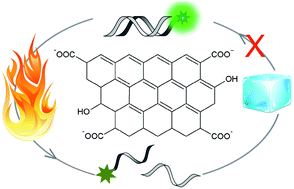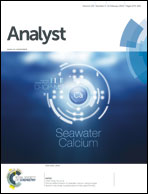Nano-graphene oxide as a novel platform for monitoring the effect of LNA modification on nucleic acid interactions†
Abstract
Graphene oxide has gained significant attention due to its exceptional physical properties at biological interfaces. It has extraordinary quenching, fast adsorption and desorption properties that are suitable for detection of molecular interactions in nucleic acids. Here we studied the interaction between locked nucleic acid (LNA) modified oligonucleotides and its complementary miR-10b DNA analog. We demonstrate that LNA modification does not alter the hybridization yield, despite a slight difference in the rate, however it does increase the duplex stability dramatically. The noncovalent nucleic acid–graphene oxide complex maintained the stability between 25 and 90 °C in the absence of oligonucleotide-induced desorption. The melting temperatures of duplexes with or without LNA base modification were determined due to remarkable fluorescence quenching and fast oligonucleotide adsorption with graphene oxide. The difference in melting temperatures was used to control the release of surface adsorbed nucleic acids at 70 °C. Finally, a mutation in the oligonucleotide sequence is detected by the complementary oligonucleotides on the graphene oxide surface. Due to its extraordinary physical properties, graphene oxide represents a remarkable platform for studying nucleic acid interactions and serves as a promising material for biomedical applications.


 Please wait while we load your content...
Please wait while we load your content...